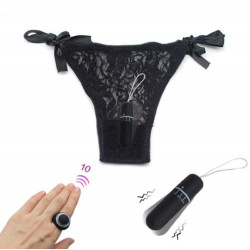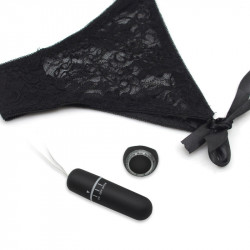
Unveiling the Sensual Art of Bondage: Exploring the Depths of Desire
Few forms of art provide as deep an investigation of emotion in the private realm of desire as bondage. A primitive, even magical bond between couples is evoked by the charm of self-control, the skill of trust, and the dance between pleasure and suffering. "Unveiling the Sensual Art of Bondage: Exploring the Depths of Desire" takes you on a captivating investigation of this age-old and frequently misinterpreted discipline in its quest for ultimate sensuality.
Under the guidance of a skilled practitioner, we explore the psychology and methods underlying bondage, illuminating its empowering and mind-and-body-transforming impacts. We reveal the mysteries of bondage and how it stokes the fires of desire, from exquisitely woven premium ropes that bind and caress to the exquisite knotwork that creates lovely patterns.
To develop a stronger bond with your partner and uncover the hidden gems of your desires, this essay encourages you to embrace the alluring beauty of bondage, regardless of your level of experience. Let go of your inhibitions and explore a world where pleasure and surrender coexist, leading to unforgettable moments of intense closeness.
Understanding the concept of bondage
The fundamental act of bondage is the voluntary restraint of a partner for sex. It entails immobilizing or restricting movement with various instruments, including ropes, handcuffs, and shackles. Bondage aims to increase both parties' sense of vulnerability and surrender so they can explore their imaginations, wants, and boundaries in a secure setting.
The history and evolution of bondage
With origins in many different cultures and civilizations, bondage has a lengthy and complex history that spans centuries. The act of controlling and controlling a partner has long been a component of human sexuality, from the sensual art of the Kama Sutra to the ancient Japanese rope bondage, or Shibari.
Bondage has changed and adapted, absorbing elements from various subcultures and cultures. Through their graphic sketches and photographs, 20th-century pioneers like John Willie and Irving Klaw popularized bondage. Nowadays, people and couples looking to explore their passions and strengthen their bonds have embraced bondage as a common form of sexual expression.
The psychology behind bondage and desire
Bondage taps into the psychological concepts of power dynamics, trust, and surrender. People can feel strong emotions and experiences when they give up control or take on a dominant role. Being bound can make people feel vulnerable, which enables them to throw down their guard and give their desires their whole attention.
Many people use bondage as a kind of escape, a short-term reprieve from the obligations and stresses of daily life. It enables people to explore the depths of their wants and connect with their basic instincts, which enhances their enjoyment and connection with their partners.
Different types of bondage techniques
The term "bondage" refers to a broad variety of methods and practices, each of which produces distinct feelings and experiences. Typical types of bondage include:
1. Rope Bondage (Shibari/Kinbaku): This elaborate type of bondage, which has its roots in Japan, uses ropes to adorn the body with beautiful patterns and decorations. Finding a balance between comfort and constraint takes practice and talent.
2. Cuffs and restraints: These are often used instruments for bondage, making it simple and safe to restrict the complete body or specific limbs. These accessories offer a quick and easy method to experience the joys of bondage, ranging from basic handcuffs to more intricate leather restraints.
3. Spanking and Impact Play: In this kind of bondage, the body is struck or spanked to produce delightful sensations using paddles, floggers, or other impact toys. It blends the psychological elements of power exchange with the excitement of physical feeling.
4. Sensory Deprivation: Sensory deprivation bondage heightens the remaining senses by limiting one or more senses, including sight or sound, which increases pleasure and produces a singular and intense experience.
Safety precautions and consent in bondage play
When it comes to bondage play, safety is crucial, just like it is for any other kind of sexual activity. The following are some essential safety measures to think about:
1. Communication and Consent: It's essential to have open and sincere communication with your spouse. Before beginning any bondage practices, talk about expectations, wants, and boundaries. To guarantee everyone's comfort and safety, get explicit consent from each party and create a safeword.
2. Education and Skill: Safe bondage play requires appropriate education and skill development. Get acquainted with various methods, tools, and safety precautions. To improve your knowledge and abilities, seek advice from seasoned professionals, attend workshops, or use internet resources.
3. Check for Allergies and Health disorders: Make sure that neither you nor your partner have any allergies or medical disorders that could be made worse by particular materials or activities before utilizing any bondage equipment or accessories. If required, do a patch test.
4. Safe Release Mechanisms: Always have a fast and dependable technique for removing restraints in an emergency. Practice the release techniques in advance to ensure you can securely and swiftly release your partner if necessary.
How to introduce bondage into your relationship
It can be thrilling and satisfying to incorporate bondage into your relationship. To assist you in navigating this exploration, consider the following advice:
1. Start with Open Communication: First, talk to your partner about your goals and limits. Establish a secure environment where you may freely discuss your issues and interests.
2. Educate Yourself: To understand more about consent, safety precautions, and bondage techniques, read books, watch educational films, or go to seminars. Your level of comfort and confidence will increase with your level of knowledge.
3. Go Slow: Begin with less complex and frightening kinds of bondage, including blindfolds or mild shackles. As you and your partner grow more accustomed to the practice, gradually advance to increasingly tricky methods.
4. Experiment and Explore: Have an open mind and be willing to investigate many facets of bondage. Since everyone has different needs and preferences, pay close attention to how your spouse responds and make necessary adjustments.
Bondage equipment and accessories
Having the appropriate tools and accessories is crucial to embracing the sensual realm of bondage. Here are a few well-liked options:
1. Ropes: For Shibari/Kinbaku rope bondage, premium, supple, and long-lasting ropes are necessary. Seek out ropes for this use, such as synthetic ropes like MFP or nylon or natural fibres like jute.
2. Handcuffs and Restraints: These multipurpose, user-friendly tools provide safe, prompt restraint. Based on your comfort level and personal preferences, select from a range of materials, including leather, metal, and Velcro.
3. Blindfolds: By creating a sensation of sensory deprivation, blindfolds heighten anticipation and amplify other senses. Choose comfortable, soft materials for your clothing.
4. Impact Toys: Common options for impact play include paddles, floggers, and whips. Experiment with various fabrics, sizes, and textures to determine what best fits your tastes and comfort level.
Tips for beginners in bondage
Here are some valuable pointers for first-time bondage participants to guarantee a satisfying and joyful experience:
1. Start with Trust: Build an open line of communication and trust with your spouse. During bondage play, trust is essential for both mental and physical safety.
2. Establish Clear Boundaries: Before beginning any bondage activities, talk about and set clear limitations and boundaries. Tell the truth about your comfort level and your desire to learn more.
3. Employ Safe Words: Work with your partner to devise a safe word that may be used to instantly halt or pause play. Safewords are crucial for upholding consent and guaranteeing everyone's comfort and security.
4. Get Started Slowly and Easily: Start with simple methods and work your way up as you gain comfort and confidence. Spend some time exploring and figuring out what you and your spouse enjoy.
Exploring the emotional and physical benefits of bondage
Bondage can provide a variety of emotional and psychological advantages in addition to physical ones.
1. Intimacy and Trust: Bondage necessitates a high degree of intimacy and trust between couples, strengthening the relationship and promoting a deeper emotional connection.
2. Desire Exploration: Bondage offers a consenting and secure environment for examining fantasies, wants, and power dynamics that are not feasible in daily life. It enables people to test their boundaries and explore new facets of their sexuality.
3. Heightened Sensations: Bondage heightens physical sensations by limiting movement or influencing sensory experiences, making even the slightest touch or caress more enjoyable and powerful.
4. Mindfulness and Presence: Focus and presence are necessary for bondage, which enables people to become conscious and present in the moment. This can strengthen the bond between lovers and improve the entire experience.
Conclusion: Embracing your desires and exploring the world of bondage
The alluring and transforming art of bondage encourages people and couples to explore their passions, strengthen their bonds, and discover the hidden gems of their sexuality. You can start a captivating journey towards transcendent sensuality and deep intimacy by accepting the sensuous beauty of restraint, trust, and surrender. The realm of bondage is ready to reveal the depths of your fantasies and fan the flames of passion, regardless of your level of experience. Accept your desires, be honest with your partner, and set a path to transform your perception of pleasure and connection permanently.












































